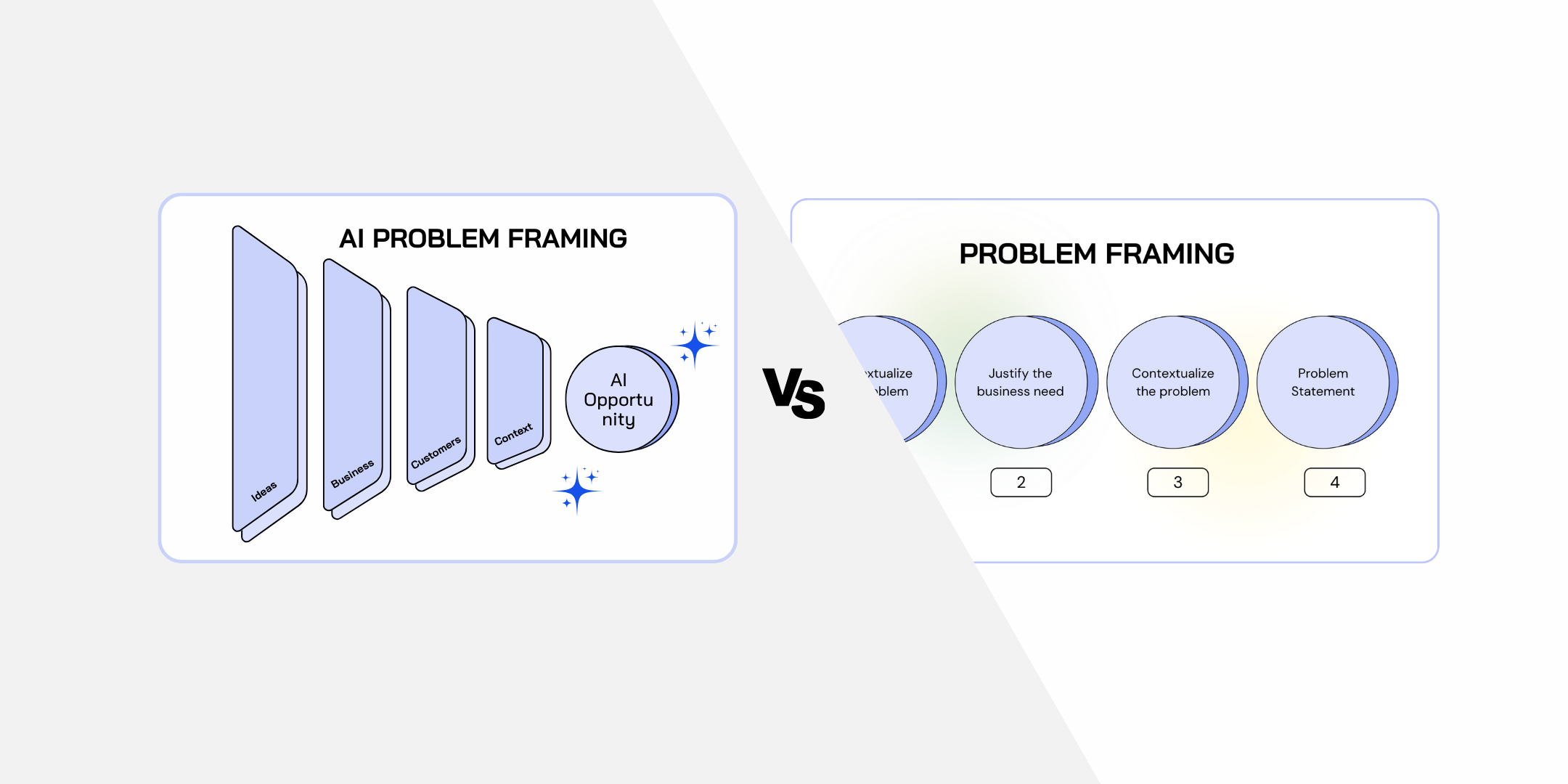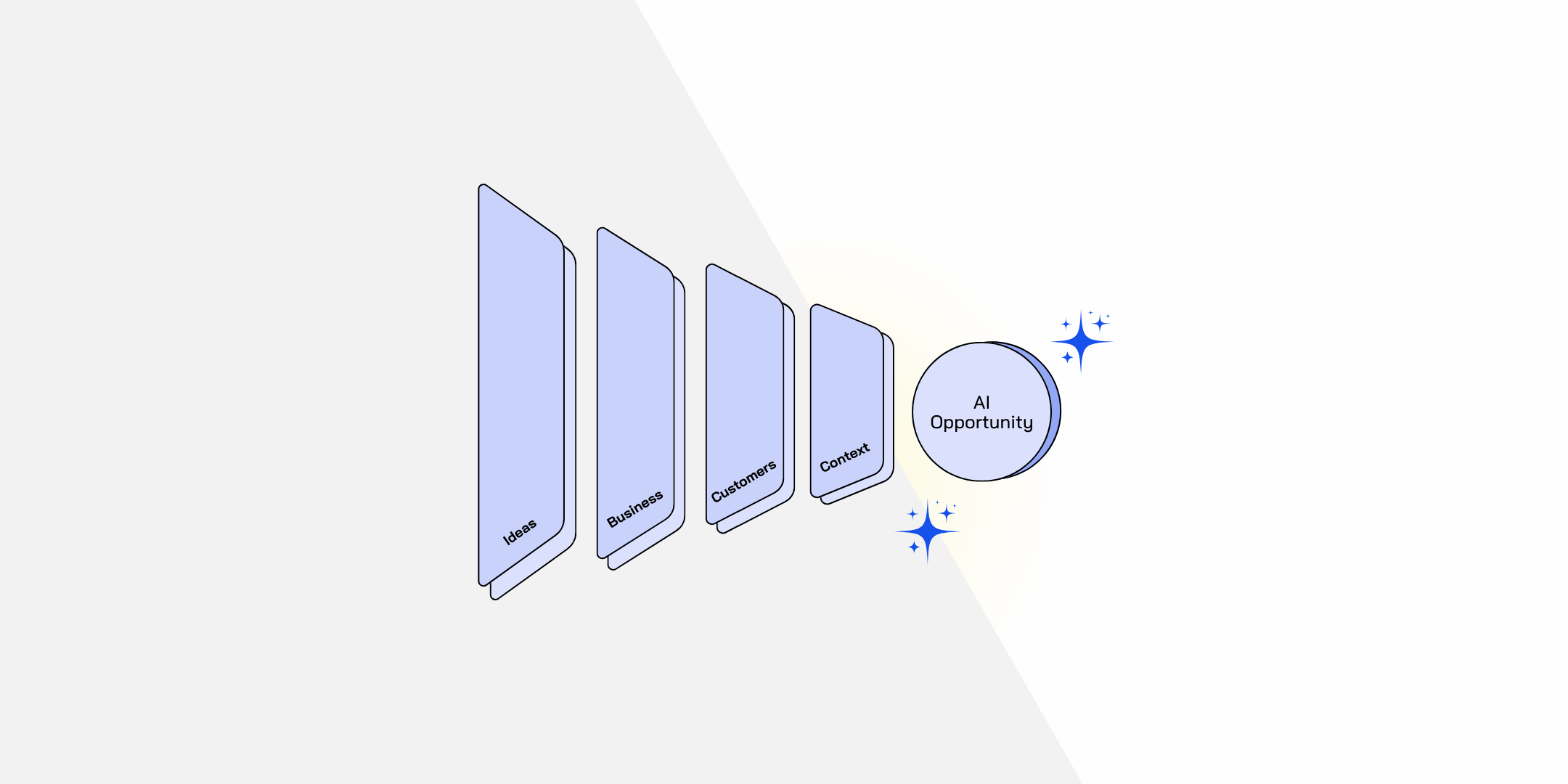Innovation Strategy Alignment Workshop: a step-by-step guide

Innovation teams are no strangers to ambition. Most of you start each year with big plans, eager to drive change and make a difference. But as we all know, even the best intentions don’t always translate into measurable results. Like those New Year’s resolutions that fade by February, innovation goals often get lost in the shuffle. Budgets shrink, priorities shift, and too often, innovation teams find themselves struggling to justify their value.
Why does this happen? The answer isn’t simple, but there’s a common thread: innovation, no matter how important, can sometimes feel like a “nice-to-have” rather than a critical asset. Without clear goals that align with business priorities, innovation efforts risk being seen as extra—interesting, but not essential.
This Innovation Strategy Alignment Workshop was designed to change that. Imagine guiding your team through a 4-hour session that not only clarifies what you’re working toward but also connects it directly to the organization’s most pressing goals for 2025. The objective is simple: to help innovation teams like yours make a tangible impact, so that innovation isn’t just a buzzword—it’s a clear, valuable driver of business success.
In this guide, I’ll walk you through each stage of the workshop, breaking down a process that can help your team align, focus, and take action. Whether you’re a seasoned facilitator or just starting to lead innovation, this workshop provides a practical roadmap to get everyone on the same page and working toward meaningful outcomes.
Let’s dive in.
Who is This Workshop For?
Whether you’re an innovation manager, a product lead, or a business unit head, if your team’s success relies on driving strategic value and securing support from leadership, this workshop is for you. It’s also ideal for teams that may have faced challenges in gaining traction, securing budgets, or justifying their work’s impact on business objectives.
Key Audience:
- Innovation Managers
- The Innovation Team
- Product Managers
What Do You Need for This Workshop?
To get the most out of this workshop, here’s what you’ll need to prepare:
- Gather your team and block off a 4-hour session in your team’s calendar to ensure everyone can be fully present and focused.
- Make sure you have the organization’s key business goals for the upcoming year handy. You’ll need these for the goal-mapping exercises on the board.
- Collect any existing goals or planned activities for your innovation team. This list will provide a solid foundation for mapping and prioritization.
- Download our ISA - Innovation Strategy Alignment Workshop template
- If you have facilitation experience, you can lead the session yourself. However, if facilitation isn’t your specialty, it’s highly recommended to bring in an experienced facilitator. This is a challenging workshop that requires keeping everyone on track, focused, and engaged, especially during in-depth discussions.
With these essentials in place, you’ll be ready to guide your team through a structured, impactful workshop that aligns innovation efforts with strategic business goals.
ISA Workshop Agenda
1. Welcome & Icebreaker
- Duration: 7-8 mins
- Objective: Foster a collaborative and open atmosphere among participants.
Activities:
Check-In – Each participant writes one word that describes how they feel about today’s session and places it on the virtual “couch” in Miro. This sets the tone and creates a comfortable environment for sharing.
Your First Job in 3 Words – Ask each participant to think back to their first job and type three words that capture that experience. Participants then place their notes on the designated area in Miro and share a brief explanation (keeping it under 5 minutes total). This light-hearted reflection helps build empathy and connection within the group.
2. Building Empathy within the Innovation Team
- Duration: 15 mins
- Objective: Strengthen team cohesion and gain insight into each member’s focus areas, skills, and perspectives on priorities.
Activities:
My Abilities – Each team member rates their own abilities (e.g., customer-centricity, innovative thinking, technical acumen) by placing stars on a scale. This provides a quick view of individual strengths.
My Strengths and Challenges – Participants use sticky notes to write down what they believe they do best and what they find most challenging. This helps team members understand each other’s strengths and areas for growth.

80% of My Time Goes Into… – Team members vote [using the Poll feature] the activities where they spend most of their time, giving insights into each person’s daily focus and responsibilities.

My Top Priority – Each participant writes down what they consider their top priority at work. This helps highlight individual focus areas and align priorities within the team.
Our Vision as an Innovation Team – Participants complete the “We want to go from… to…” statements, expressing their aspirations for the team’s future. This step builds a collective vision and sets the foundation for shared goals.

During this activity, you and your team might discover discrepancies in how you’re spending your time or distributing your focus. And that’s okay. Misalignment is common, especially in fast-paced environments where priorities can shift quickly. If these differences come up, don’t hesitate to pause the workshop and discuss them. Use this as an opportunity to understand each other’s perspectives, realign your focus, and ensure everyone has a clear understanding moving forward. This open conversation will lay a stronger foundation for the rest of the session.
3. The Business Goals We Could Support
- Duration: 15 mins
- Objective: Identify which 2025 business goals the Innovation Team can realistically support and specify relevant objectives to ensure alignment.
Step 1
Shift Focus to Business Goals – Ask the team to move from thinking about their own innovation objectives to focusing on the broader business goals for 2025.
Discuss and Toggle Relevant Goals – As a team, discuss each business goal and toggle only those that the Innovation Team can realistically support in 2025. Encourage the team to consider where their capabilities and resources can make a genuine impact. This focused selection ensures that innovation efforts are aligned with high-priority goals.
Step 2:
List Specific Objectives – For each goal toggled ON, team members should write down any specific objectives or initiatives from leadership that they’re aware of for 2025.
Place in Relevant Boxes – Position these objectives around the designated “tree” or framework on the Miro board. This will help make alignment more precise, linking each business goal with actionable innovation objectives.

4. Rethink Innovation Goals
- Duration: 3 mins
- Objective: Encourage participants to shift their perspective on goal-setting, focusing on consistent, controllable activities that drive long-term results.
Think Like a Marathon Champion – Take a moment to reflect on what it takes for marathon champions to succeed. They don’t just focus on crossing the finish line; they commit to daily training and incremental improvements. Winning a marathon is less about the destination and more about the disciplined journey.
Set Goals as Activities Within Your Control – Just like marathon champions, innovation teams can benefit from setting goals that emphasize actions over outcomes. Think about innovation goals as a series of consistent activities that you can control, influence, and sustain. For example, instead of aiming to “be customer-centric,” commit to talking to one customer each week to gather insights. Or, instead of setting a broad goal to “launch new business models,” focus on building and testing a prototype every month.
Reflection – Spend a few minutes thinking about how you can apply this approach to your team’s innovation goals. What activities could you commit to that would build momentum, compound over time, and ultimately lead to meaningful results?
4. Aligning Innovation Activities with Business Goals
- Duration: 60-90 mins
- Objective: Help participants connect selected business goals with actionable innovation activities to create a focused alignment between their team’s efforts and strategic priorities.
Activity:
Review Selected Business Goals - Ask participants to revisit the business goals they identified earlier in the workshop. This step refreshes everyone’s focus on the strategic objectives the innovation team aims to support.
Choose an Innovation Activity Category - Participants review the various categories of innovation activities provided (e.g., “Create, Manage, and Measure an Innovation Pipeline,” “Stakeholder Buy-In and Opportunity Discovery,” etc.). For each business goal, they will select the category that best aligns with that objective, ensuring that the chosen activities directly support the team’s strategic focus.
Select Specific Activities - After choosing the relevant category for each goal, participants move into that category’s section and select specific activities that will support their chosen business goal. Encourage participants to think critically about which actions are most realistic, impactful, and aligned with the team’s capabilities.
Voting and Prioritization: In the first voting session, each participant votes on the activities they believe are most actionable, feasible, and impactful for achieving the selected business goals. After voting, the team comes together to discuss the results, with each member sharing their reasoning and considering others’ perspectives. The goal is to reach a consensus on which activities should be marked as “high priority.” Once the team agrees, place a “High Priority” sticker on those activities to signify their importance.
This structured approach ensures that the team carefully considers each activity’s relevance, feasibility, and potential impact, creating a focused and actionable plan aligned with business goals.
5. Enablers and Blockers
- Duration: 10 mins/ category
- Objective: Identify potential challenges (blockers) and resources or advantages (enablers) that could impact the success of the high-priority activities.
Activity:
Review High-Priority Activities – Start by revisiting the activities marked as “High Priority” in the previous step to keep the focus on critical initiatives.
Individual Brainstorming – In silence, each participant individually brainstorms possible blockers and enablers:
Blockers: On pink sticky notes, write down any challenges, obstacles, or risks that might prevent successful implementation of the high-priority activities. Use one idea per note.
Enablers: On green sticky notes, identify resources, strengths, or factors that could support or enhance the likelihood of success. Again, use one idea per note.
Team Discussion and Clustering – After brainstorming, the team comes together to discuss and cluster similar notes. Grouping common blockers and enablers provides clarity on shared challenges and available resources, creating a more unified approach to tackling these activities.
This exercise helps the team anticipate potential challenges and leverage existing strengths, setting a realistic foundation for moving forward with their top priorities.

6. Debrief - Final Alignment Check
- Duration: 3 mins
- Objective: Ensure that the team’s selected activities are fully aligned with the organization’s business goals and meet critical alignment criteria.
Activity:
Review the Checklist – Each participant takes a moment to review the checklist statements and reflects on how well the team’s selected activities and steps align with the business goals.
Vote on Alignment – Using stars, place your vote closer to “Yes” if you feel that the team has successfully addressed this area, or closer to “No” if you believe there’s room for improvement. This final voting step helps identify any areas that may need adjustments to ensure alignment.
Checklist Statements:
- Clear and Aligned Goals: “Our activities have clear, measurable outcomes that directly align with the business goals.”
- Cross-Functional Collaboration: “Our activities support regular communication and collaboration between the innovation team and other business units.”
- Tracking and Accountability: “We have established processes to measure progress and assess the impact of our innovation efforts.”
- Commitment to Learning and Iteration: “We have built in the ability to test, learn, and adapt continuously as part of our long-term strategy.”
- Recognition and Engagement: “We prioritize a system for recognizing and incentivizing contributions to innovation across the organization.”
This final check allows the team to confirm alignment and make any last adjustments needed for a clear, unified direction moving forward.

This structured debrief ensures that the team has addressed key alignment areas and is ready to proceed confidently. Let me know if this aligns with your expectations!
7. Plan Next Steps
- Duration: 5 mins
- Objective: Define the immediate next steps to ensure that the high-priority activities move forward with clarity and accountability.
Activity:
Review High-Priority Activities – Start by revisiting the high-priority actions selected in previous steps to keep focus on what matters most.
Brainstorm Next Steps – Individually, think about what needs to happen next to move each of these actions forward. Write down one idea per sticky note, considering actions like setting follow-up meetings, identifying key owners, or scheduling a refinement workshop.
Share and Discuss – As a team, discuss the brainstormed next steps. Cluster similar ideas, prioritize actions, and decide on the first key step to take for each high-priority item.
This activity ensures that everyone is aligned on immediate follow-up actions, creating a clear roadmap to maintain momentum beyond the workshop.
Facilitation Tips for a Smooth Workshop
To ensure this workshop is engaging, productive, and efficient, here are a few facilitation tips:
- Plan short breaks after each 50-minute session to help participants recharge and stay focused throughout the workshop.
- Keep everyone on track by using the “Follow Me” feature to guide participants’ focus on specific areas of the board. This helps minimize distractions and ensures everyone is looking at the same content during each activity.
- Use Miro’s timer feature to keep track of time and ensure each section stays on schedule. This adds a sense of urgency to activities and encourages participants to stay engaged.
- Allow participants time for individual brainstorming before diving into group discussions. This approach gives everyone a chance to think independently, ensuring that quieter voices are heard and fostering a diversity of ideas.
With these facilitation strategies, you’ll create a workshop environment that’s both structured and inclusive, maximizing engagement and productivity.









